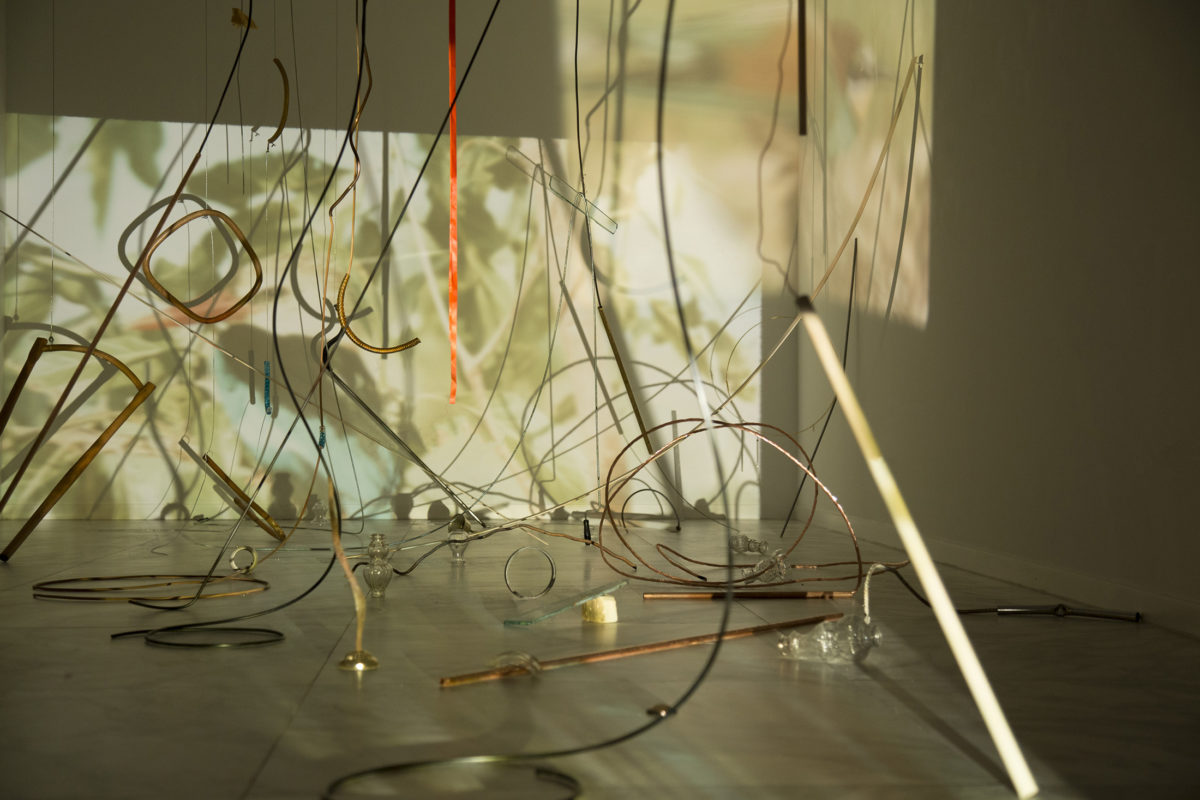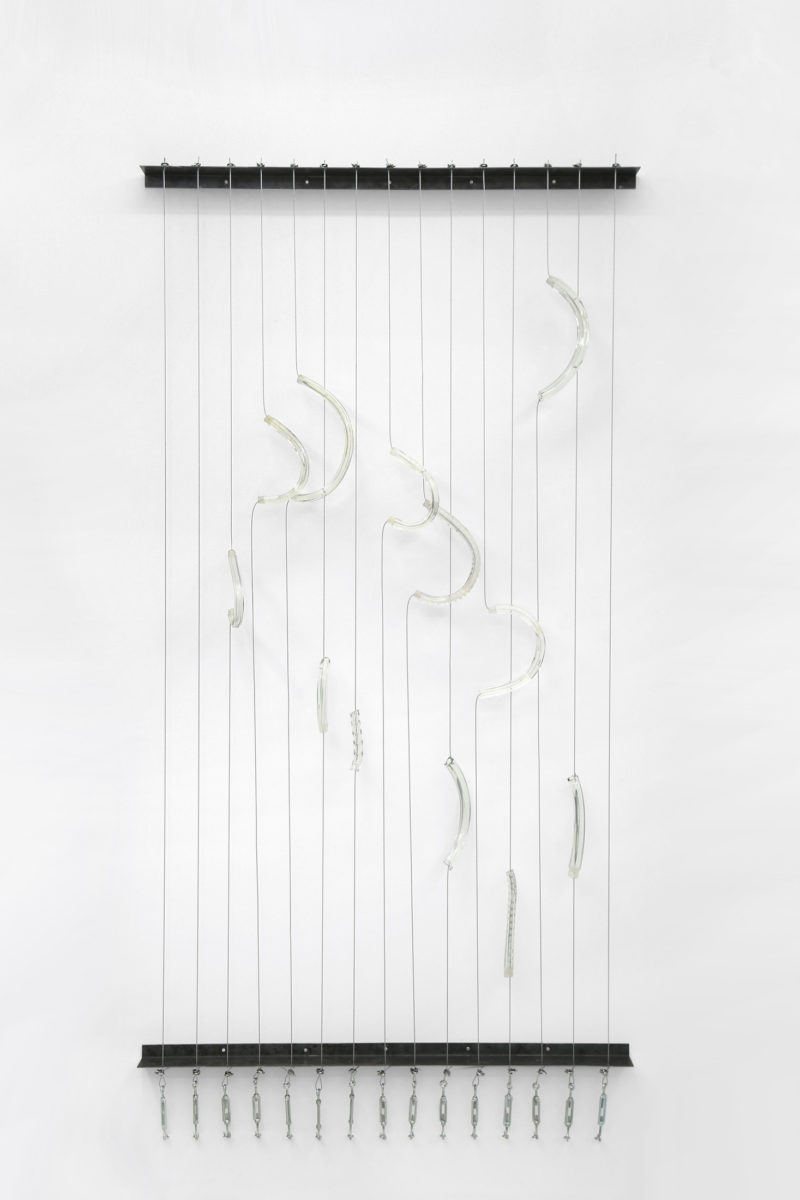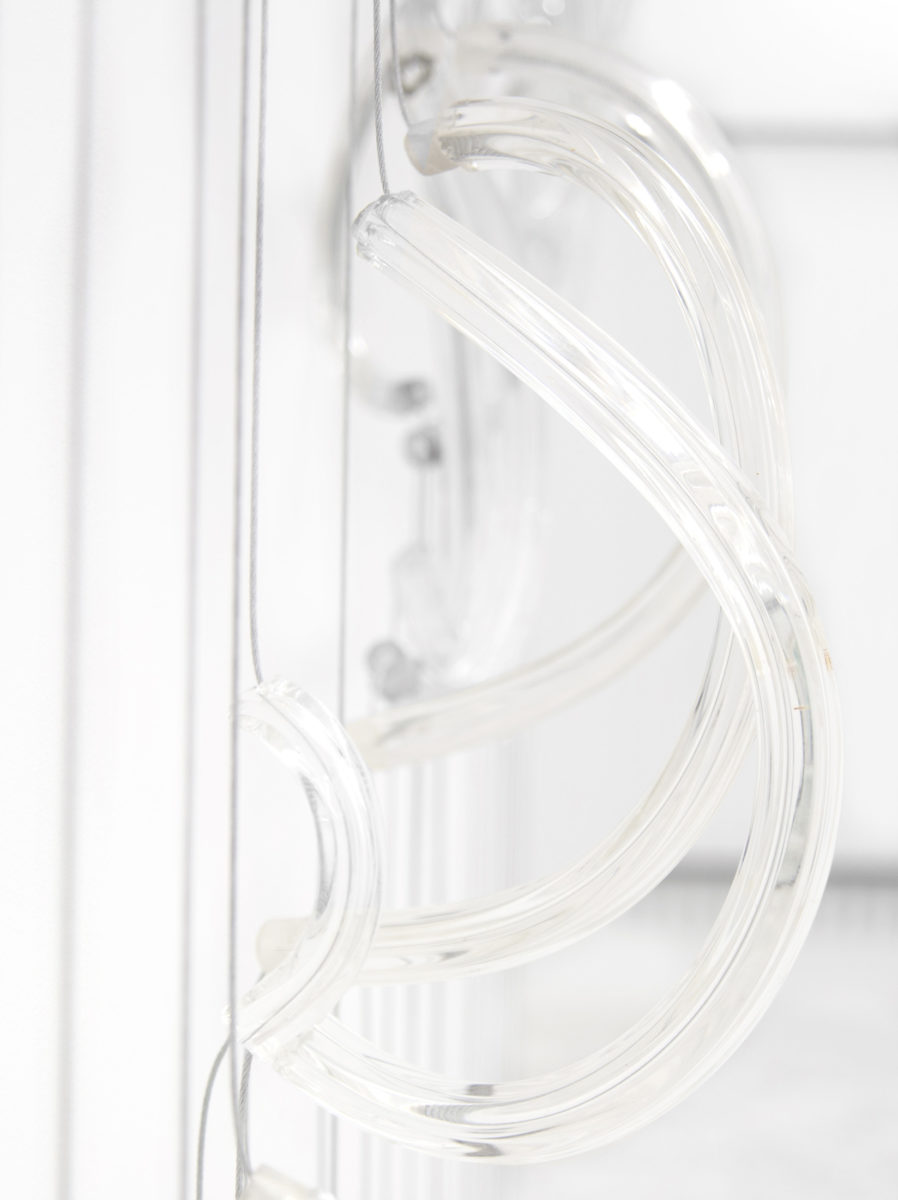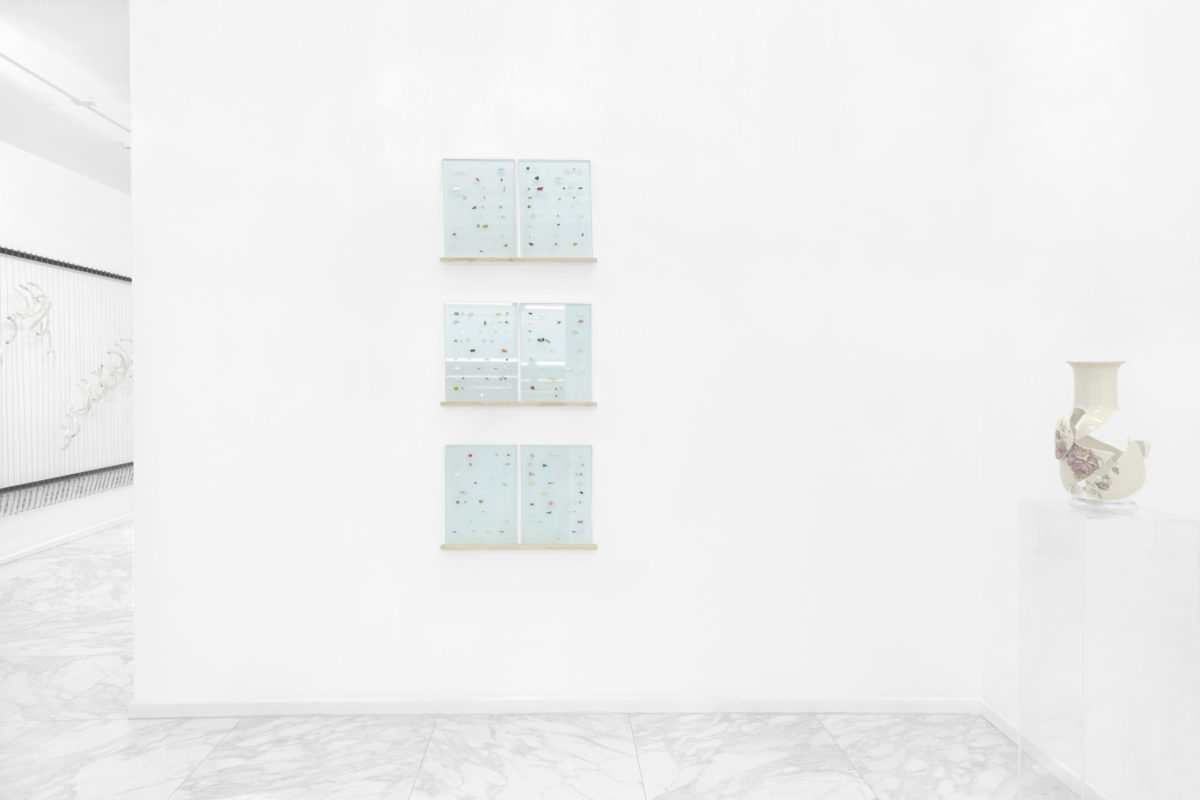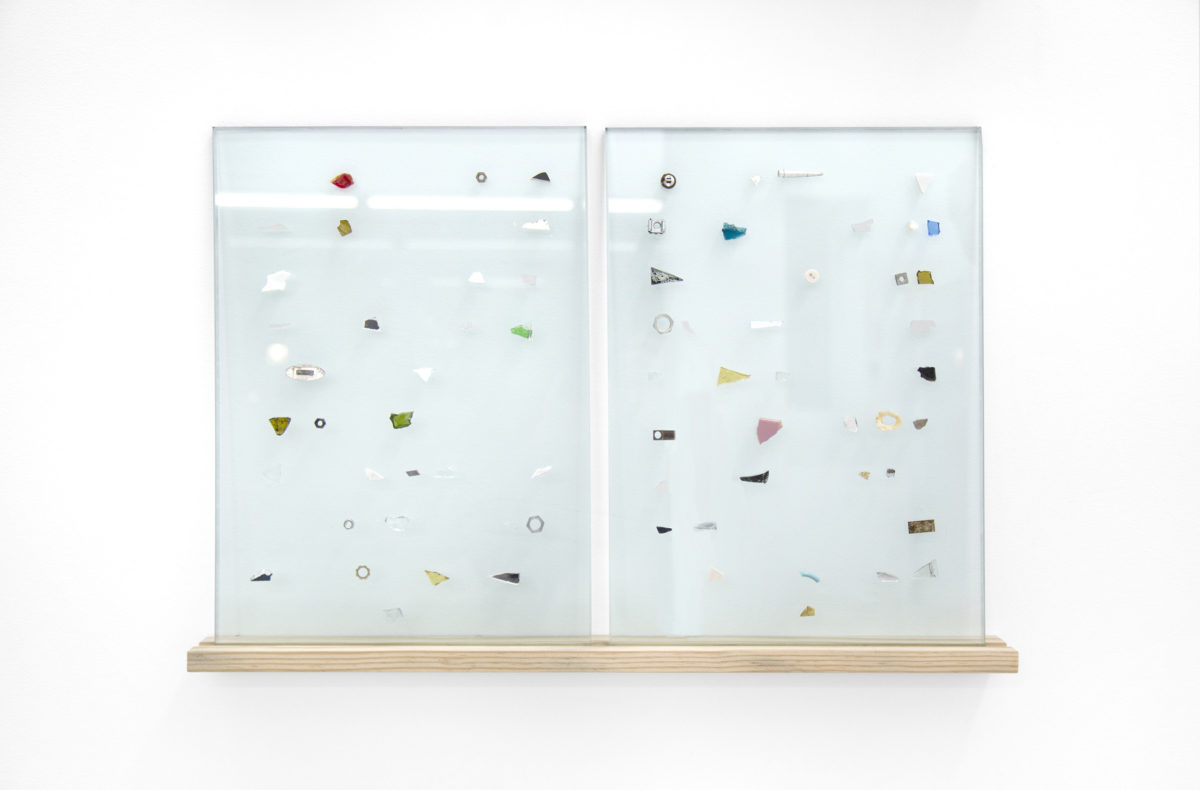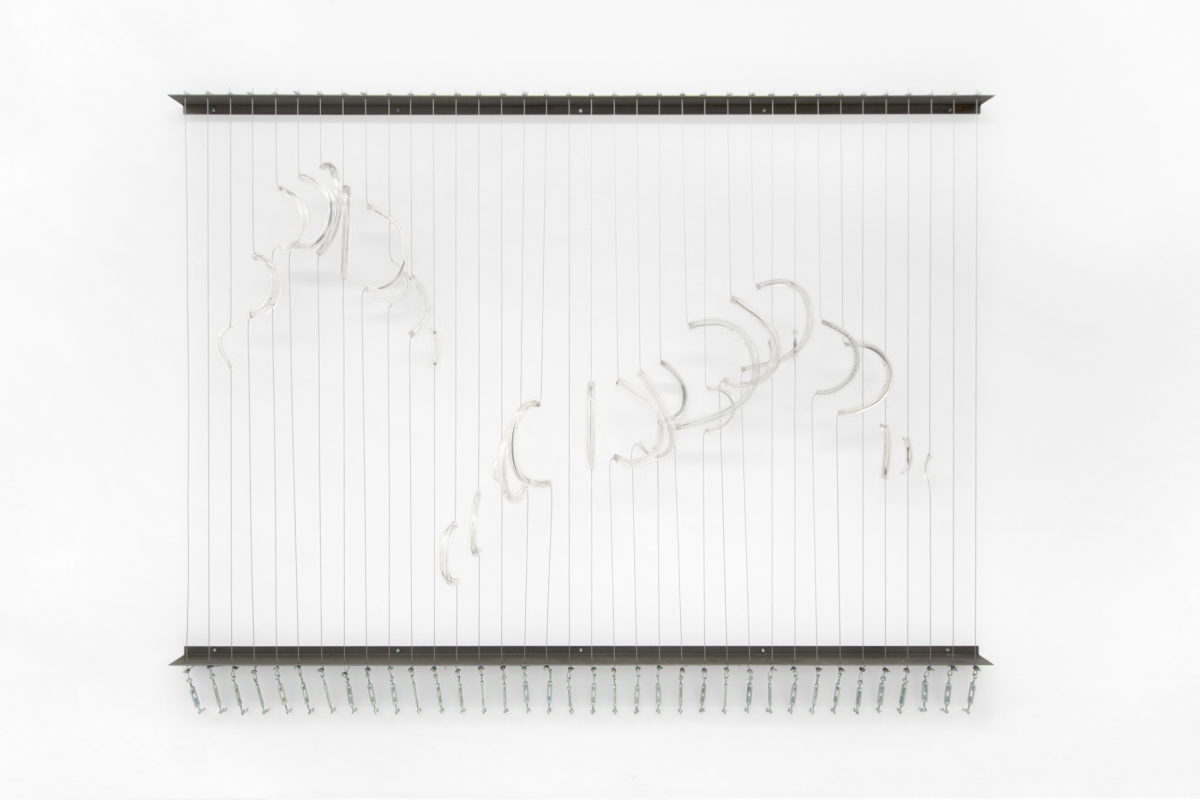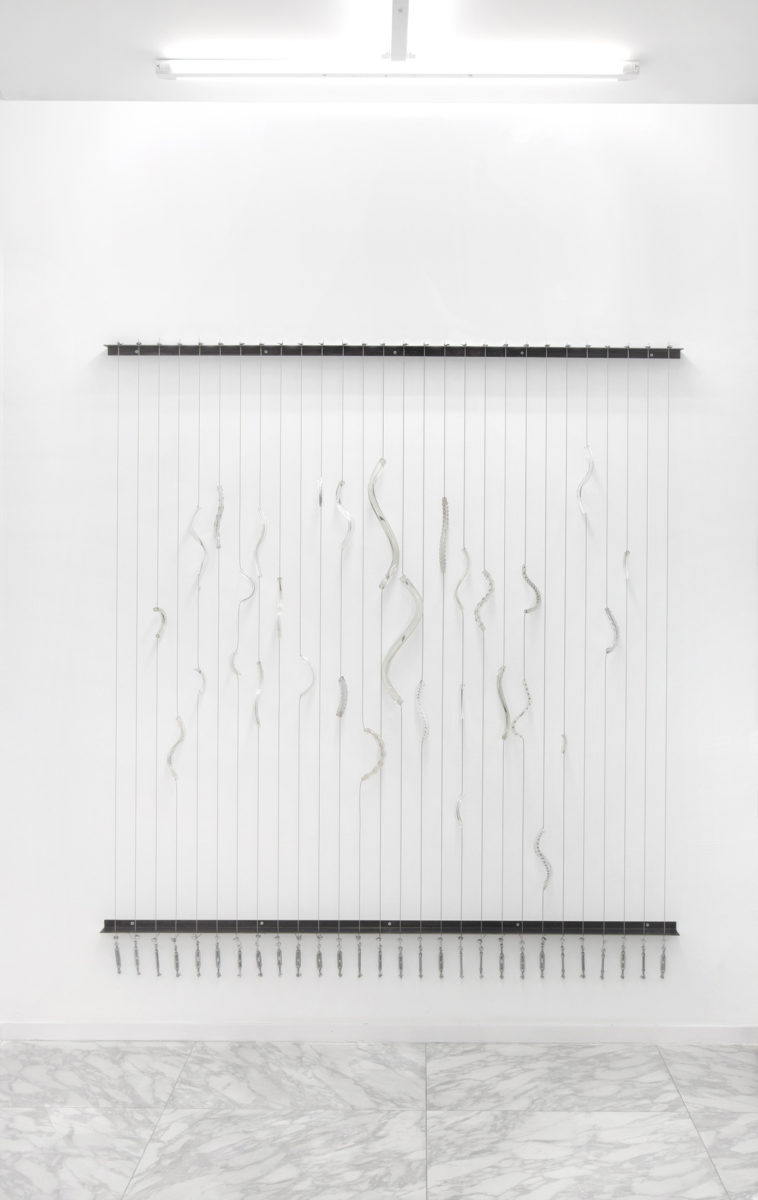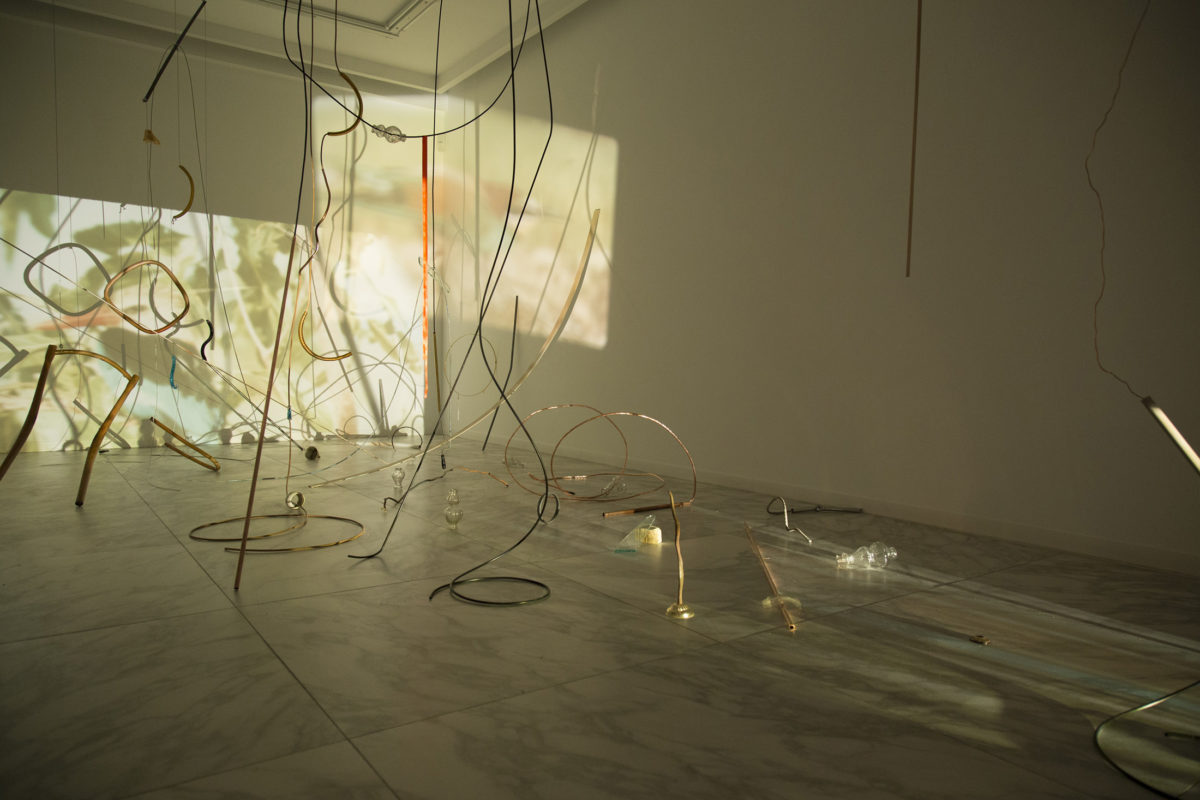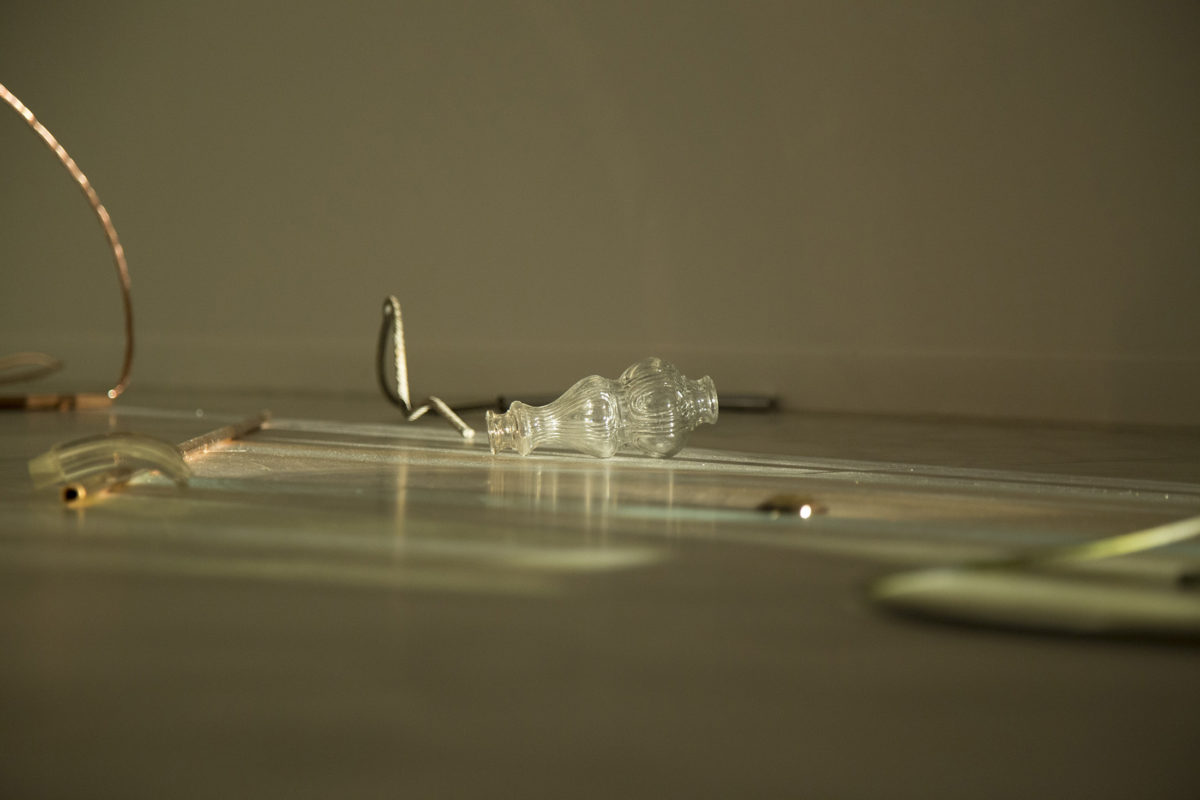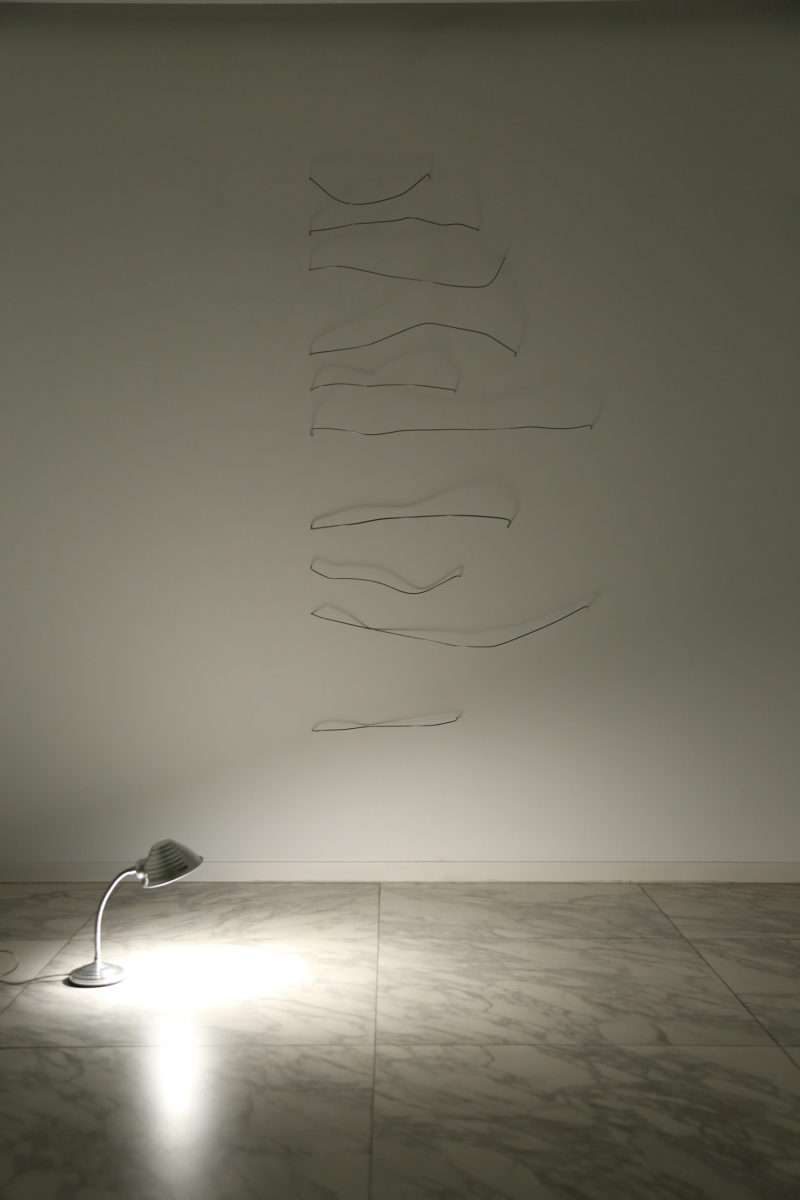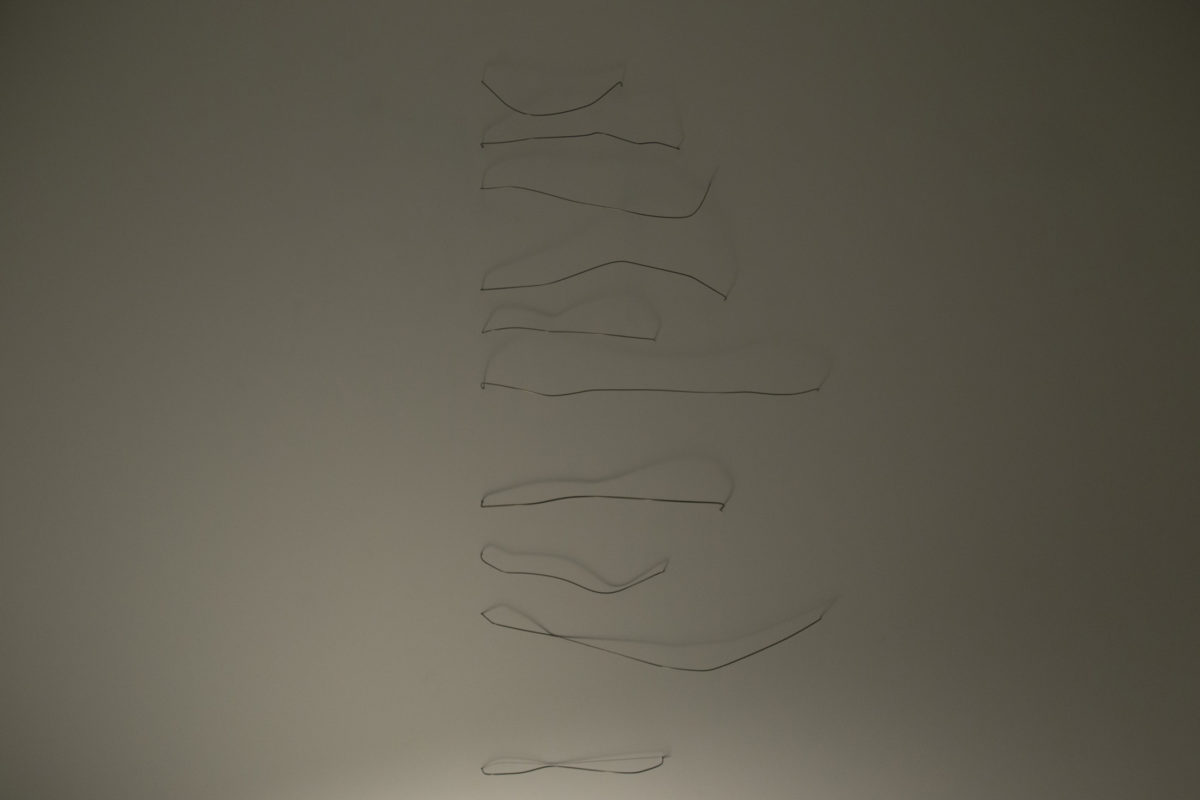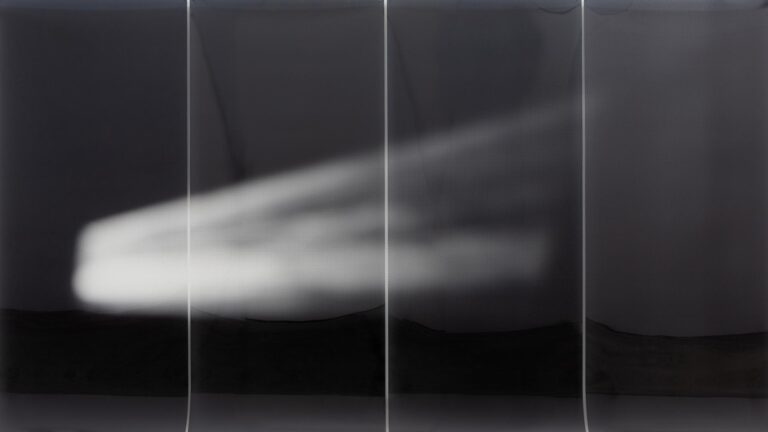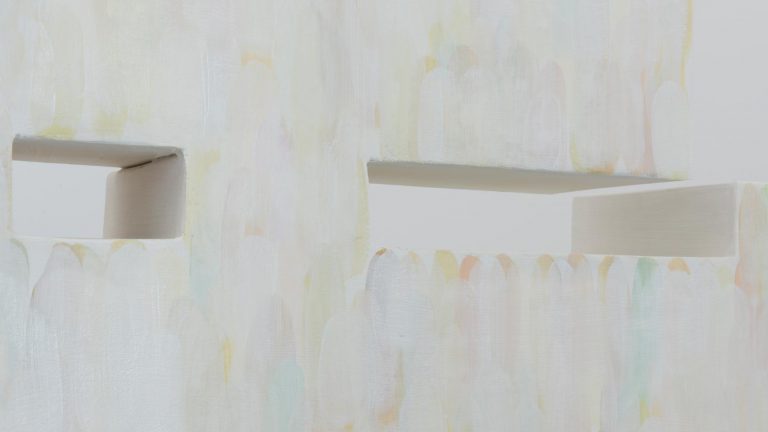Artist: Julia Llerena
Exhibition title: La palabra, menos una
Venue: CIBRIÁN, San Sebastian, Spain
Date: February 19 – April 18, 2020
Photography: all images copyright and courtesy of the artists and CIBRIÁN, San Sebastian
In the sixteenth century, real language is not a totality of independent signs, a uniform and unbroken entity in which things could be reflected one by one, as in a mirror, and so express their particular truths. It is rather an opaque, mysterious thing, closed in upon itself, a fragmented mass, its enigma renewed in every interval, which combines here and there with the forms of the world and becomes interwoven with them : so much so that all these elements, taken together, form a network of marks in which each of them may play, and does in fact play, in relation to all the others, the role of content or for sign, that of secret or of indicator.[1]
This description made by Michel Foucault in The Order of Things : An Archeology of the Human Sciences can be a starting point to look at the work, mostly installative, of Julia Llerena. That is, not seeing it as an intention to articulate a multitude of signs together but to contemplate this grouping as a fragmented mass. It is not an epistemological search but an attempt to wrap the viewer and leave him in front of that diversity of objects that contain the secret and the indicator of its materiality.
The artist uses found objects, fragments of everyday life as a language that she unfolds as a form of writing in the exhibition space. The glass or the iron that melts, the stones that a past event tore from the ground, etc. are earthly material, previously celestial that the artist assembles, without any transformation, to create her works.
Now the open question made by Julia Llerena is : Once this language manifests and begins to exist, how do we have to archive it? This question refers to the structures that are necessary to maintain its meaning and prevent it from falling into the absurd or into oblivion. In that sense, Julia Llerena shows us in a tangible way the fragilty of the language and all the forces required to keep it in the reality.
Her works answer this question with the same idea developed by Julietta Singh in her essay No archive will restore you (ed. 3Ecologies Books, 2018). In this case, the archive is not something formal that belongs to a cold place as we can easily imagine. Its place is the body. The body archive as wrote it the author. The advantage to consider the body archive is that bodies do not know amnesia, they have a memory even if its components are permanently regenerated.
Julia Llerena’s works involves the artist’s body through the collection of found objects whose scale rarely excedes that of the hand. It also involves the viewer’s body that, due to the blunt shapes of those objects and their immersive display, creates a feeling of strange hospitality. A kind of passive-agressive relation that reinforces with the light display on the ground floor of the exhibition.
“La palabra, menos una” aims to share the experience of this enigmatic language and question the possibility of archiving that experience in the body of the viewer who faces the exhibition space.
[1] Michel Foucault, The Order of Things : An Archeology of the Human Sciences, Ed. New edition
Julia Llerena, La palabra, menos una, 2020, exhibition view, CIBRIÁN, San Sebastian
Julia Llerena, La palabra, menos una, 2020, exhibition view, CIBRIÁN, San Sebastian
Julia Llerena, Tensión uno : vidrio, 2020, Steel wire, glass, steel, 199 x 110 cm
Julia Llerena, Tensión uno : vidrio, 2020, Steel wire, glass, steel, 199 x 110 cm
Julia Llerena, Sin titulo, 2020, Ceramic, glass, perspex pedestal, 148 x 25 x 25 cm
Julia Llerena, Sin titulo, 2020, Ceramic, glass, perspex pedestal, 148 x 25 x 25 cm
Julia Llerena, La palabra, menos una, 2020, exhibition view, CIBRIÁN, San Sebastian
Julia Llerena, Impulso de archivo, (6 works), 2017, Glass, fragmented found objects, wood, 65 x 43,5 cm (each)
Julia Llerena, Impulso de archivo, (6 works), 2017, Glass, fragmented found objects, wood, 65 x 43,5 cm (each)
Julia Llerena, Impulso de archivo, (6 works), 2017, Glass, fragmented found objects, wood, 65 x 43,5 cm (each)
Julia Llerena, Tensión dos : vidrio, 2020, Steel wire, glass, steel, 176 x 255 cm
Julia Llerena, Tensión tres : vidrio, 2020, Steel wire, glass, steel, 201,5 x 199 cm
Julia Llerena, Tierra rojiza y suelta, 2020, Wires, wood, projection, glass, plastic, steel, Dimensions variable
Julia Llerena, Tierra rojiza y suelta, 2020, Wires, wood, projection, glass, plastic, steel, Dimensions variable
Julia Llerena, Palabra III, 2020, Installation, light spot and steel, Dimensions variable
Julia Llerena, Palabra III, 2020, Installation, light spot and steel, Dimensions variable



